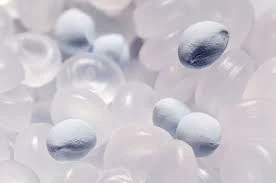The Role of Additives in Plastic Compounding Enhancing Performance and Versatility
Plastic compounding is an essential process in the plastics industry, serving as a foundation for manufacturing various plastic products. This process involves the physical blending of polymers with various additives to enhance the properties of the final product. Additives play a crucial role in determining the mechanical, thermal, and aesthetic characteristics of plastics, making them invaluable in the compounding process. This article explores the significance of additives in plastic compounding, types of additives, and their applications.
Understanding Plastic Compounding
Plastic compounding involves mixing raw polymers, such as polyethylene and polypropylene, with different additives to achieve specific performance characteristics. The compounding process typically includes melting the base polymer and incorporating additives in a controlled environment using equipment like extruders or mixers. The resulting compound can then be processed into final products using methods such as injection molding, blow molding, or film extrusion.
Types of Additives
1. Stabilizers These additives improve the thermal and UV stability of plastics, preventing degradation from heat and light exposure. Stabilizers are particularly important in outdoor applications where plastics are exposed to harsh environmental conditions.
2. Plasticizers Plasticizers increase the flexibility and workability of plastic materials. They are essential in applications requiring pliability, such as films and flexible tubing. Common plasticizers include phthalates and adipates.
3. Fillers Fillers are added to reduce material costs and enhance certain properties, such as tensile strength and dimensional stability. Common fillers include calcium carbonate, talc, and glass fibers. They also contribute to improved thermal conductivity and overall mechanical performance.
4. Colorants These additives provide color and improve the aesthetic appeal of plastic products. Colorants can be dyes or pigments, and their selection depends on the desired opacity and lightfastness in the final product.
5. Flame Retardants In applications where fire resistance is crucial, flame retardants are added to plastics to reduce flammability. These additives work by either modifying the combustion process or forming a protective char layer during combustion.
plastic compounding additives

6. Antimicrobial Agents As hygiene becomes increasingly important in various products—from healthcare to consumer goods—antimicrobial agents are incorporated to inhibit the growth of bacteria and fungi, ensuring a safer user experience.
The Importance of Additives in Compounding
The inclusion of additives in plastic compounding significantly influences the performance and usability of the final products. For example, the addition of flame retardants not only provides safety but also meets regulatory standards in various industries. Similarly, colorants enhance marketability, making products visually appealing to consumers.
Moreover, additives can tailor plastics for specific applications. For instance, a flexible plastic bag requires different additives compared to a rigid container. This customization allows manufacturers to develop specialized products that meet diverse market demands, thereby enhancing competitiveness.
Trends and Innovations
The field of plastic compounding is continuously evolving, driven by environmental considerations and technological advancements. For instance, the demand for biodegradable and bio-based additives has risen in response to increasing environmental regulations and consumer preference for sustainable products. Innovations in nanotechnology also present opportunities for creating high-performance additives that enhance material properties at minimal load levels.
Additionally, recyclability is becoming a significant factor in additive selection, prompting the development of eco-friendly additives that do not compromise the recyclability of plastics. As a result, researchers and manufacturers are continuously exploring new formulations that balance performance with environmental sustainability.
Conclusion
In summary, additives are a fundamental component in plastic compounding, serving to enhance the performance, functionality, and aesthetic appeal of plastic materials. By using a variety of additives, manufacturers can create tailored solutions for specific applications while addressing market demands and regulatory requirements. As the industry progresses toward sustainability and innovation, the role of additives will continue to evolve, fostering the development of advanced plastic composites that meet the needs of a dynamic marketplace.

